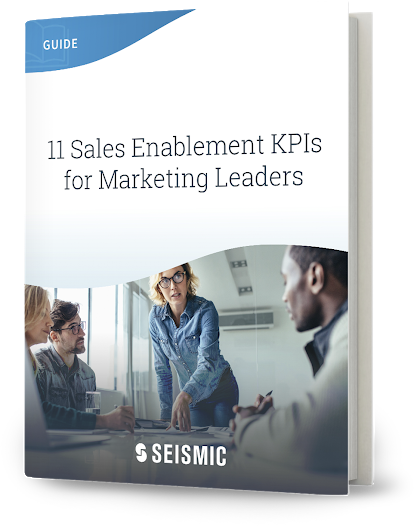I always find it amusing when I read about the gloom-and-doom over the Chief Marketing Officer role being the “most precarious position in the C-suite.” The struggles behind how to attribute credit to marketing, high rates of turnover in the position, and difficulty creating proper expectations lead to the belief that being a CMO is a shaky ground to stand on.
As a CMO who was a CEO prior to my current role, I cannot help but find it interesting as I have direct experience to contrast the two. Before joining Seismic in 2017, I was a CEO for over nine years at Guidewire Software (NYSE: GWRE), an enterprise software company for insurance companies. When I joined Seismic, I had never been the CMO before. And, after my time on the job so far at Seismic, I can declaratively say that being a CMO is better than being a CEO. Here is why:
Getting your hands dirty
One of the main functions of a CEO’s job is to manage the people managing different departments. With people in charge of all major departments, it is hard to find anything to actually sink their teeth into – except the work that nobody wants to do. Today I get to craft messaging both with our marketing team and with consulting firms, work with digital agencies and other vendors, and get involved in the processes that I am most passionate about. One process I enjoy getting involved in is helping determine which industries we should be targeting. Determining the potential market, creating compelling use cases and value statements, and bringing that strategy to the organization is one of my favorite processes to dig into. Being a CMO is my perfect balance between big ideas and company vision with the nitty-gritty of marketing tactics and execution.
Leveraging analytics through the entire buyer’s journey
I am really passionate about data and analytics – in fact, it was one of the foundational aspects of Guidewire, which is infused with analytics to help insurers make the right decisions (for example, around whether to underwrite a particular risk). The amount of data available to a marketer today is astounding. As a leader in marketing, I get to dig in with the team, sort through all of this data, and help figure out how to make it all useful and actionable.
Throughout the buyer’s journey, we have different data sources to turn to. Marketo is a key pillar to bring automation and data for the pre-lead side of the funnel. Seismic itself is the other key pillar that brings us through the sales side of the funnel with content engagement analytics and sales enablement. Our data sources allow us to make guided decisions on things like what kind of ads are resonating, as well as the best time of day to run them. Being in the weeds with this data is something I greatly enjoy, and something I found missing from my time as a CEO.
As a CEO, these analytics end up filtered through others who are choosing how to present their data, compared to using the raw data itself. Further, a lot of CEO decisions are based on a gut feeling of a situation, and lack analytics due to the nature of the decision. What information to present to the employees or deciding when to fundraise are just a couple examples of decisions without clear analytics to be used behind them. Articles in TechCrunch and Forbes lay out the internal debate between a gut decision and finding analytics for a decision. With easy access to actionable, specific analytics, I never need to have this debate with myself – I get the data for all facets of the marketing department, and my role is to act on it.
Working with fellow leaders as a peer
As a CEO, the decisions you make are not often borne from original ideas. That is not to disparage the role in any way, and definitely not to disparage Seismic’s CEO Doug Winter, who does an amazing job leading our team and our company. But more often than not, when an idea makes it to the CEO, the CEO then has to serve as a final decision maker and usually broker compromise between ideas. This is not the case as a CMO – I get to be in the mix and work closely with the other senior leaders in the company. Bouncing ideas off of my peers in sales, customer success, and product is a much different task than adjudicating differences of opinion between people I oversee when I was a CEO. Seismic President Ed Calnan, VP of Customer Success Andy Bergen, VP of Product Dave Myron, and I are lucky to have a relationship built on honest feedback. Although not always a cup of tea, getting to learn with them and give and receive that feedback as a peer is a privilege to the CMO role that often the CEO role simply does not have.
Being a CMO may seem to be a higher-risk endeavor than before in 2019, but it is ultimately rewarding and exciting in a unique way compared to being a CEO. Getting to put my own imprint on the marketing department leads to my work echoing throughout Seismic in a way a CEO’s work never could.
Imagine being able to walk into a meeting and say, “this is what our content has done to accelerate deals, the amount of revenue it has affected, and the ROI of our overall content strategy.”
Every marketer dreams about proving ROI and the Information Age has finally made it possible for marketing teams to get concrete numbers on the success of various campaigns. Download the ebook below to learn more!
